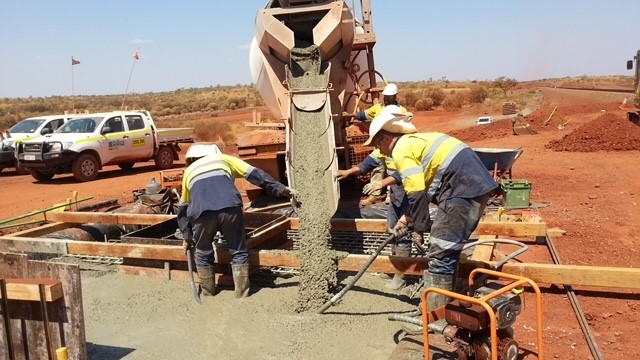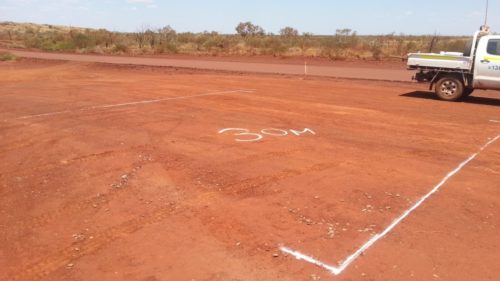We recommend using the following strength for our pole foundations to ensure that foundation bolts achieve their design capacity:
| 32 | 20 | 80 |
| (A) | (B) | (C) |
(A) Strength measured in Mega Pascals:
| Range: | |||||
| 20 (weaker) |
25 | 32 | 40 | 50 (stronger) |
|
| This relates to the amount of cement in the mix. | |||||
(B) Size of the stones (blue metal) in the mix:
| Range: | |||
| 10 | 14 | 20 | |
| This relates to the diameter a cross the stone. | |||
(C) Slump = Amount of water in the mix:
| Range: | ||
| 8 (drier) |
100 (wetter) |
|

For best results, place and compact immediately after mixing. The arrangement for the conveyance of the mix should be so planned that the mixed mass is used before its initial set.
It should be applied in layers of 100 to 300mm thick based on the shape and size of the foundation, with each layer properly compacted before laying the next one. Compaction should proceed immediately after placing. The function of the compaction is to expel the air bubbles in the mass and make it impermeable enough to attain the desired strength. Compaction is normally done by the use of mechanical vibrators. The resultant is more impermeable, dense and free from honeycombing finish.
Curing is one of the essential requirements after placement. Curing is the process of keeping it continuously damp for some days, in order to enable it to gain more strength. It has been established that the strength increases with age providing it is kept moist.
The period for which curing should be continued depends upon atmospheric conditions, such as temperature, humidity and wind velocity. In general the process of curing should be continued for seven to ten days. In cold weather, however, it ought to be cured for longer, as the rate of hardening of cement is low.
Efficient curing increases both impermeability and durability.

